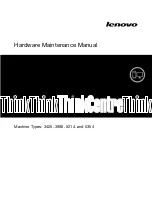
A significant additional feature of Matrix N-Series is the capability to
support Multi-User Authentication, this means that multiple users/
devices can be connected to the same physical port, and that each one
can be authenticated individually using one of the multi-method options
(802.1x, MAC or PWA).
The value exists in the ability to authorize multiple users, either using
dynamic policy or VLAN assignment for each authenticated user. In the
case of dynamic policy, this is called Multi-User Policy.
Multi-user port capacities with the Matrix N-Series are determined on a
per port, per DFE and per multi-slot system basis. Default Platinum DFE
capacities are as follows:
Per port: 8 -128
Per blade (DFE): 1024
Per chassis: 1024
It is possible to increase these capacities by purchasing additional
licences. The N-EOS-PPC license increases user port capacity on a per
DFE basis from the default capacity of 8-128 to a maximum of 1024.
When present, the N-EOS -PUC upgrade license sets the chassis capacity
at 2048 users per system, this value can be overridden using a CLI
command setting the maximum of 2048 users/port. N-EOS-PPC and
N-EOS-PUC are not available for Gold DFEs and are an optional purchase
for Platinum DFEs. Diamond DFEs include N-EOS-PPC.
Muti-user authentication and policy can provide significant benefits to
customers by extending security services to users and devices connected
to unmanaged devices, third party switches/routers, VPN concentrators or
wireless LAN access points at the edge of their network. Security,
priority and bandwidth control are enhanced while protecting existing
network investments.
dynamic Flow-Based Packet Classification
Another unique feature that separates the Matrix N-Series from
all competitive switches is the capability to provide User-Based
Multilayer Packet Classification/QoS. With the wide array of network
applications used on networks today, traditional Multilayer Packet
Classification by itself is not enough to guarantee the timely transport
of business-critical applications. In the Matrix N-Series, User-
Based Multilayer Packet Classification allows traffic classification
not just by packet type, but also by the role of the user on the
network and the assigned policy of that user. With User-Based
Multilayer Packet Classification, packets can be classified based on
unique identifiers like “All Users,” “User Groups,” and “Individual
User,” thus ensuring a more granular approach to managing and
maintaining network confidentiality, integrity and availability.
Layer 2
• MAC Address
• EtherType (IP, IPX, AppleTalk, etc.)
Layer 3
• IP Address
• IP Protocol (TCP, UDP, etc.)
• To
S
Layer 4
• TCP/UDP port (HTTP, SAP,
Kazza, etc.)
Switch
Por
t
VLAN
User
Flow
Deny
Priority/QoS
Rate Limit
Permit
Contain
Matrix N-Series
Access Control
Class of Service
User Based Multilayer Packet Classification/QoS
Integrated services design
Integrated Services Design is a key differentiator that separates the
Matrix N-Series DFE from the competition. Integrated Services Design
reduces the number and type of modules required to build typical wiring
closet configurations, simplifying the overall network design. In turn, this
significantly reduces the maintenance and sparing cost as each DFE can
perform all of these services unlike competitive offerings which have a
plethora of different line cards required in order to provide similar services.
Per dFe Integrated services design
Multilayer packet classification
- enables the delivery of critical
applications to specific users via traffic awareness and control.
• User, Port and Device Level (Layer 2 through 4 packet classification)
• QoS mapping to priority queues (802.1p & IP ToS/ DSCP) up to 16
queues per port
• Multiple queuing mechanisms (WFQ, WRR, etc.)
• Granular QoS/rate limiting
• VLAN to policy mapping
switching/VLaN services
- provides high-performance connectivity,
aggregation, and rapid recovery services
• Extensive industry standards compliance (IEEE and IETF)
• Inbound and outbound bandwidth rate control per flow
• VLAN services support
− Link aggregation (IEEE 802.3ad)
− Multiple spanning trees (IEEE 802.1s)
− Rapid reconfiguration of spanning tree (IEEE 802.1w)
• Flow setup throttling
enterasys Operating system (eOs) Feature summary
Page 5






























